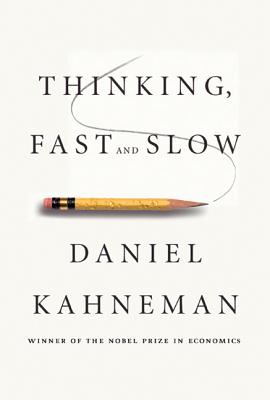Thinking, Fast and Slow
Daniel Kahneman

Before reading this book, I would say I considered myself a skeptic of the field of behavioral economics. Not that I thought the results were wrong; just that it was hard to see the external validity of the results, or how they enriched our understanding of human decision-making. It seemed to me like the only application that ever came out of these studies was, “Change 401(k) plans to opt-out instead of opt-in!” which is nice as far as it goes, but that’s only so far. However, a friend recommended this book very highly to me, and since Kahneman is one of the founders of the field I figured it was worth a read.
I’m very glad to have given Kahneman the benefit of the doubt. This book closes a gap that had existed in my understanding of behavioral economics (though probably not a gap that actually existed in the literature, if I had kept up with it better), namely: is there a systematic view that we can use to understand the deviations from the traditional economic model of rationality that behavioral economic experiments have documented? Only with an affirmative answer can we hope to really improve our understanding of human decision-making. Otherwise, we just end up with a lot of reduced-form empirical results and at best will end up sticking a bunch of fudge-terms into decision-making models. But Kahneman, in this book, describes a clear affirmative answer to this question with his concepts of “System 1” and “System 2”. Briefly, “System 1” is the set of mental routines that are operative most of the time and with which we conduct routine behaviors. It is not reflective and does not perform anything that we could characterize as rational calculation, operating primarily by association. “System 2” is the rational decision-maker, which does complex calculations and makes what we might call informed decisions. Although Kahneman doesn’t really delve into the realm of evolutionary psychology, it’s easy to see how the two Systems represent an evolutionarily logical division of mental labor. This is key to me–Kahneman’s explanation does not just say, “guess what, people are idiots sometimes”, but actually gives a compelling view of why this might be, and perhaps most importantly, why no one is exempt from these results.
This was one of the most appealing parts of the book to me. Kahneman, who is clearly extraordinarily intelligent and a Nobel prize winner, often grounds his arguments in observations of his own behavior that surprised him. Furthermore, I think he provides a very useful frame for thinking about deviations from rationality, which is that they seem unbelievable to us because we have no mental access to the processes through which they occur. This is because the thinking and remembering “we” means our System 2s. For example, this provides a good explanation for how advertisements can be effective. Our rational selves take the view that we would never be more likely to buy a product just because we saw a commerical for it, and indeed our System 2s would not, but advertising operated on our System 1s by establishing mild positive associations that have a measurable impact on decision-making. Indeed, the more you think that you are not likely to be influenced by advertising, the less you will keep your System 2 on guard, and consequently the more you will be influenced by it!
The final section of the book introduced a very interesting idea: the difference between the experiencing self and the remembering self. I won’t go too much into it because this review is already too long, but basically, the remembering self is the one that makes decisions, and it generally treats the experiencing self basically as though it were a completely different person. For example, people express much more willingness to undergo a painful operation if they are told they will be given a drug that will remove their memory of the experience after the fact. This seemed like a very fundamental issue of decision-making that I had never seen addressed before.